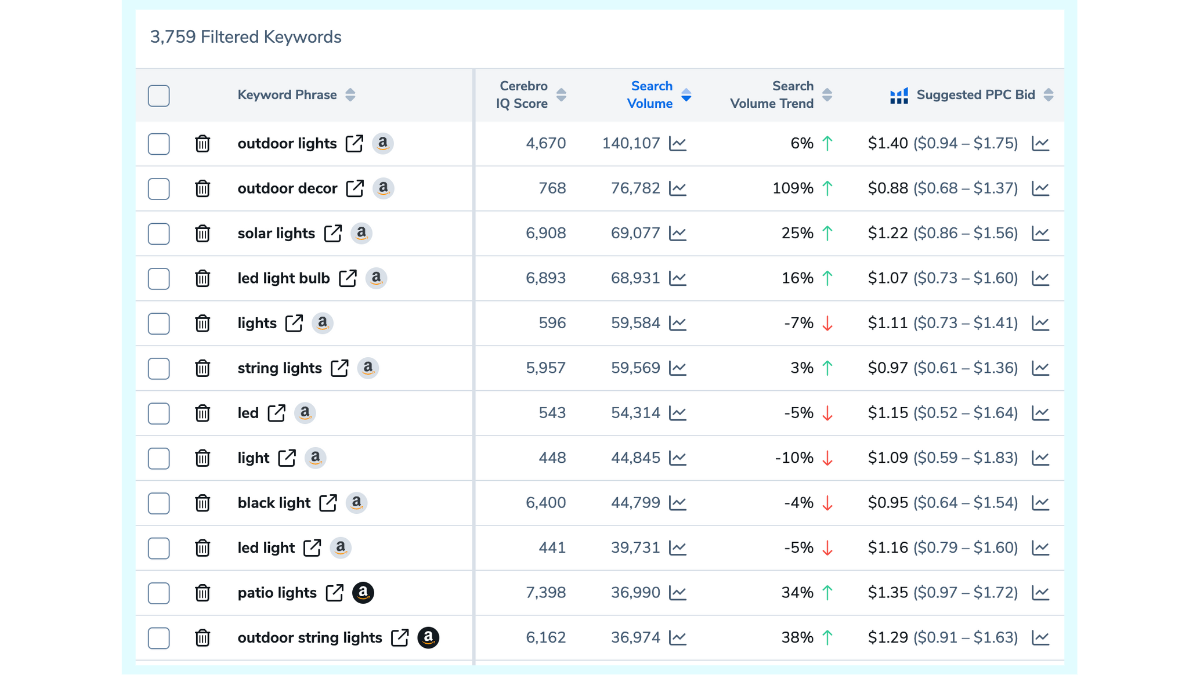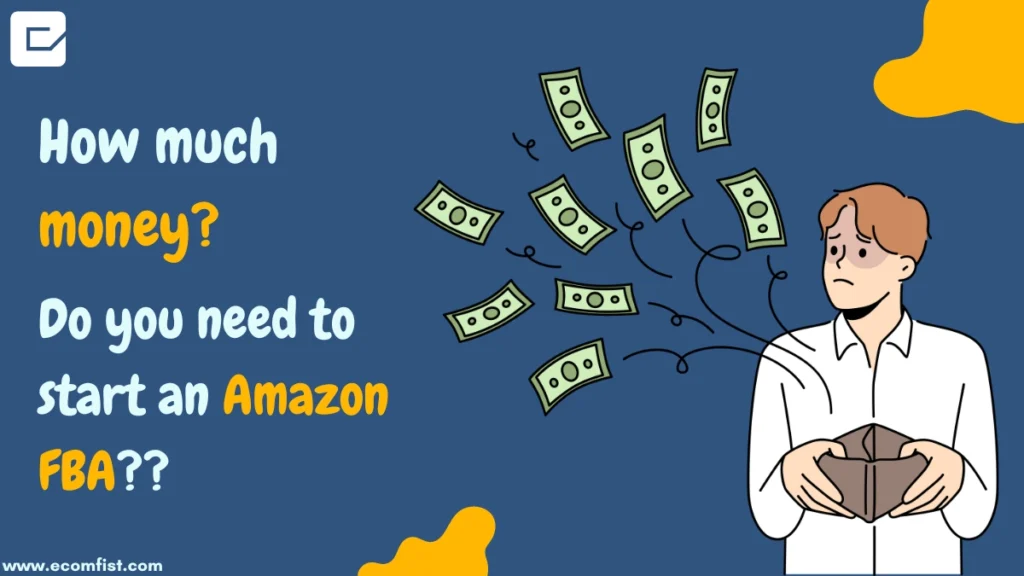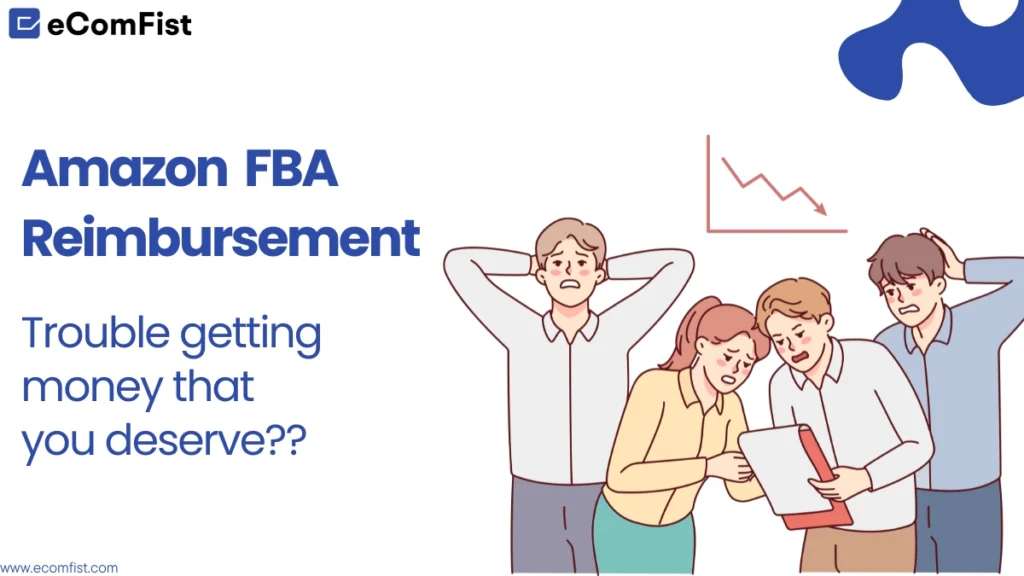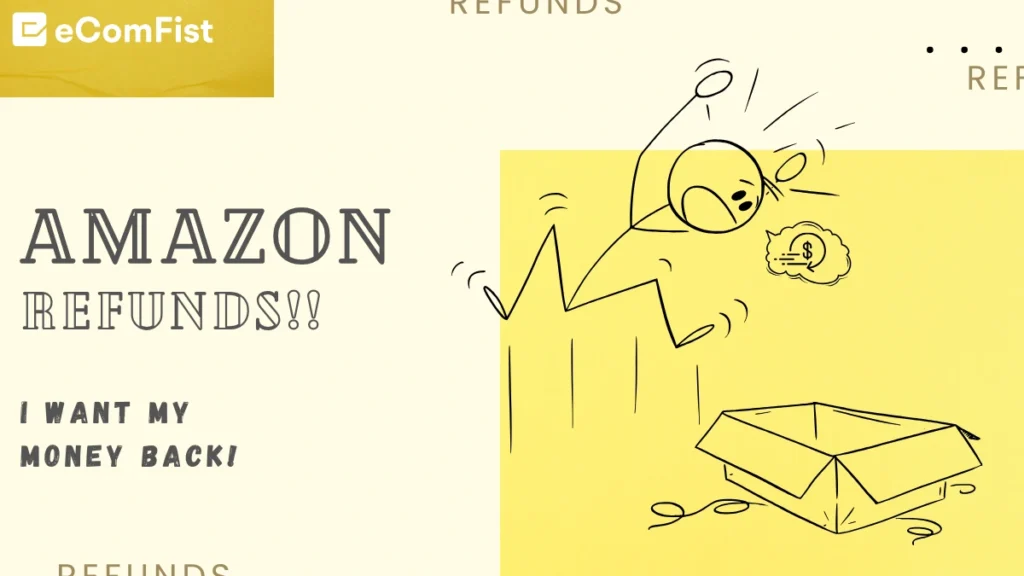Amazon has many reasons for rejecting your ads for top placement, but you also have the power to tell Amazon exactly how to deploy your ads. Most of the time, losing first placement results in wasted ad spend, higher ROAS, fewer conversion rates, and a decreased CPC. That’s why, PPC success in 2024 will demand a few insider tricks and tips.
A well-planned PPC campaign strategy that prioritizes precise keyword research, precise ad targeting, strategic bidding, and consistent optimization will help you avoid these undesirable effects. If you’re looking for some great hacks on how to optimize sponsored products in 2024, you’ve found the right post.
So, let’s figure out how to make PPC work for you.
Hack # 01: Keyword mastery: Uncover high-performing keywords
The foundation of any profitable pay-per-click (PPC) campaign is keyword research or the process of identifying the phrases on which to place ad bids. A keyword analysis is an art as well as a science. It’s not just about leveraging the tools at your disposal; you also need to know your audience well enough to guess what they’ll type into the search bar. That way, your ads will be displayed precisely when your target audience is looking for them, during their actual searches.
Create a list of all possible keywords
There are many different ways to find keywords.
Use keyword research tools
Using tools like Helium 10, Jungle Scout, AMZ Scout, etc., this is the most efficient method for discovering thousands of profitable keywords.
For example, say “Addlon LED outdoor string lights” is a keyword for your product. With Cerebro of Helium 10, you have got over 3,700 related keywords with varying data and frequency.
Do manual research
These days, tools account for 95% of all keyword research. But, you can manually scan competitor listings to see what keywords they’re using in their PPC ads.

Here’s where you can show off your creativity and profit from your prior expertise as you decide which keywords to use in your advertisements.
Refine the keyword list
You’ve got a good keyword list now. It’s time to make some choices about what to keep and what to discard. Selecting keywords with high volume and low competition is, indeed, conventional wisdom. Yet, in today’s cutthroat environment, such insight may not be provided by tools. So, the type of keyword combination that works in PPC advertising is entirely up to your creativity and level of expertise. Most sellers today really do require the services of an Amazon advertising agency to avoid failure in Amazon FBA.
Apply these strategies and be creative
- You can get high-performing keywords by using the feature “run listing analyzer” on your competitors’ products.
- Use extensions of different tools on Amazon to get a deeper insight into your competitors’ product keywords.
- Add long-tail, specific and relevant keywords in your keyword list for PPC campaigns. It’s good for better targeting, lower CPC, lower competition, and high relevance.
- Include variations and synonyms of keywords in the list.

The Cerebro list also provides you with the frequency of keywords, as shown below. From there, make combinations of keywords. E.g You can make combinations like:
-
- Outdoor string lights for patio led
- LED lights outdoor strings
- Garden light strings
- Test campaigns with “broad term keywords” because it will give you an idea of how to fill the gap in your keyword strategy, and uncover categories and keyword opportunities.
- Always employ negative keywords, but first sort them into categories according to product category, brand, and feature.
For example, “solar,” “fairy light,” “net light,” and “lantern” are all negative keywords.
One last thing to keep in mind is that there is no such thing as a good or bad keyword research method or keyword application strategy. It rather depends on the keyword ad type, the specificity you want to choose, and the match type (broad, phrase, or exact). That’s why crafting an effective keyword strategy and list takes skill.
Suggested Read: How and Why to hire an Amazon marketing agency?
Hack # 02: Automatic vs. Manual Campaigns: Unlock the perfect balance for skyrocketing sales.
Let me ask you a question here.
What should you choose if you need to run a PPC ad to get the most common ad placement at the top of the search results and on the product listing itself? Controlling your campaigns or giving Amazon full control?
Let’s decide after a while.
Manual campaigns give you complete freedom to optimize your campaigns, keyword targeting, bid, and ad placement, while automated campaigns give Amazon complete control over these aspects.
Here, manual campaigns might seem like the best choice, but if you only use them, you might miss out on valuable keywords or targeting opportunities that automatic campaigns could find. On the other hand, relying solely on automatic campaigns will increase your CPC and ROAS.
So, the best trick is to use both of these campaigns together.
Maintain good balance
- Start with automatic campaigns to discover new keywords, targeting opportunities, and customer behavior insights.
- Run it for at least 2 weeks and collect the high-performing relevant keywords from there.
- Shift toward the manual campaigns with high-performing keywords and start it with at least 30 keywords. Adjust bids, add negative keywords, and refine ad placement wisely.
- Keep an eye on both campaigns’ performance at all times, and apply any insight you gather from one to the other. and vice versa.
Hack # 03: Bid smarter not harder: Innovative bidding strategies to outpace competitors.
On the Amazon results page, smaller brands can sometimes outrank larger ones in ad placement. Being as strategic as possible with your bids is extremely important. As a result, it’s not always the case that the highest bidder wins.
- Choose which type of bid (fixed bids, dynamic bids up and down, and dynamic bids down only) best suits your advertising goals, budget restrictions, and level of risk tolerance.
- If you want less risk with a cost-saving approach, choose dynamic bids – down only.
- If you’re looking to maximize visibility, ROAS, and sales while taking on some risk, choose dynamic bids – up and down.
- If you want full control over your bids, fixed bids may be the best option.
Note: Fix bid is the preferred method of highly experienced PPC advertisers.
- Increase your bid by a cent or two over what the suggested PPC campaigns are. Bid $1.51 or $1.52 if your competitor is offering $1.50. It will make you more competitive in auctions, boost your chances of getting a high ad rank, and increase your share of impressions.
- Try out new bidding techniques on a regular basis, such as expanding your search scope, concentrating on long-tail keywords, or raising your bids for the best ad placements. Constant experimentation is the only way to determine what method works best for your campaigns.
Hack # 04: The art of negative keywords: Filter out the noise and focus on profitability
It goes without saying that you will have to pay for every click on your PPC ad, whether or not the click results in a sale. This really is a terrible feeling. Here come the negative keywords that keep your ads from being shown to the wrong audience or in response to the wrong searches.
So, negative keywords help bring in relevant impressions, clicks, and traffic that lead to real conversions. In the end, you’ll save money on advertising, and that’s a win-win. Yet, you must master the art of using them.
Negative keyword placement trick
- It is best, to begin with a broad list of negative keywords. Make a list of popular negative keywords, such as “free,” “cheap,” or “used,” to prevent your ads from showing to bargain-seeking customers.
- For very specific search queries, you must use phrase match and exact match negative keywords.
Using the example above, if you sell “LED outdoor string lights,” but your ad is more likely
to show up for “LED outside fairy lights,” you would use this term as an exact match negative keyword.
- What’s most important is to analyze the search term report and use poor-performing keywords with low conversion rates as negative keywords.
Let’s suppose your “outside LED string light” product isn’t doing well with the keyword “LED garden patio lights.” You’ll probably use it as a negative keyword.
- Don’t dwell too much on the negative. Don’t generalize “patio light” as a negative keyword for “LED outdoor string lights.” It could unintentionally limit relevant search phrases.
Note: Typically, once a PPC campaign has been running for two to three weeks, the underperforming keywords are selected and used as negative keywords. Be extremely careful when using a negative keyword. Even a small, unintentional mistake on your part could hurt your sponsored product campaign a lot.
Hack # 05: A/B testing unleashed: optimize your ads for maximum conversions
Testing in a sponsored product ad is everything. You can’t get the most out of your advertising budget unless you test different keywords. Ad testing is the process of finding out which of several different versions of an ad, a targeting strategy, or a bidding strategy works best.
Let’s imagine you’re running an Amazon Sponsored Products campaign for “organic dog food” and you want to try out some new strategies.
1-Combination Targeting
Split your campaign into two ad groups, each focusing on a different set of keywords or products.
- Keywords like “dog food,” “organic dog food,” and “healthy dog food” are the focus of Group A’s Amazon advertisement.
- Long-tail keywords such as “grain-free organic dog food” or “large-breed organic dog food” are focus on Group B’s Amazon advertisement.
Keep an eye on the results of both ad sets while they run in combination. When enough information has been gathered, it may be compared to see which targeting strategy yields the best results in terms of clicks, conversions, and return on ad spend (ROAS).
2-Ad Creatives
Make two different types of ads for your campaign. Test these two ads with different versions of the product listings – the product’s title, images, bullet points, and description.
Different ad variations should be tested in different ad groups or campaigns. Review the stats to determine which ad copy performed best in terms of ad clicks, conversions, and return on ad spend after it had run for a given amount of time.
3-Bidding Strategies
Put various bidding strategies to the test to determine which one works best.
Plan A: You manually bid a set amount for each keyword based on your research and the bids of your competitors.
Plan B: use of Amazon’s up-and-down dynamic bidding, which allows Amazon to instantly change your bids based on the possibility of a sale.
Maintain a dual approach with two distinct ad groups or campaigns. You may find the best bidding strategy for your campaign by comparing the outcomes in terms of ad placements, CPC, conversion rates, and ROAS.
Suggested Read: 07 best amazon marketing trends and predictions every seller should Know
Conclusion
Lastly, by mastering these top sponsored product ad placement hacks, you can rule Amazon’s search results in 2024. You may get your products to the top of search engine results pages (SERPs) by focusing on the effectiveness of high-performing keywords, finding the sweet spot between automatic and manual campaigns, and using creative bidding methods. You may increase your exposure and revenue even more by making interesting ads, focusing on specific, different (unique) products, and using negative keywords.
If you want to experience unparalleled excellence in sponsored product ad optimization, contact us, and we will go the extra mile for you. At eComFist, you will experience our Amazon advertisement service as transforms your ordinary into the extraordinary.












